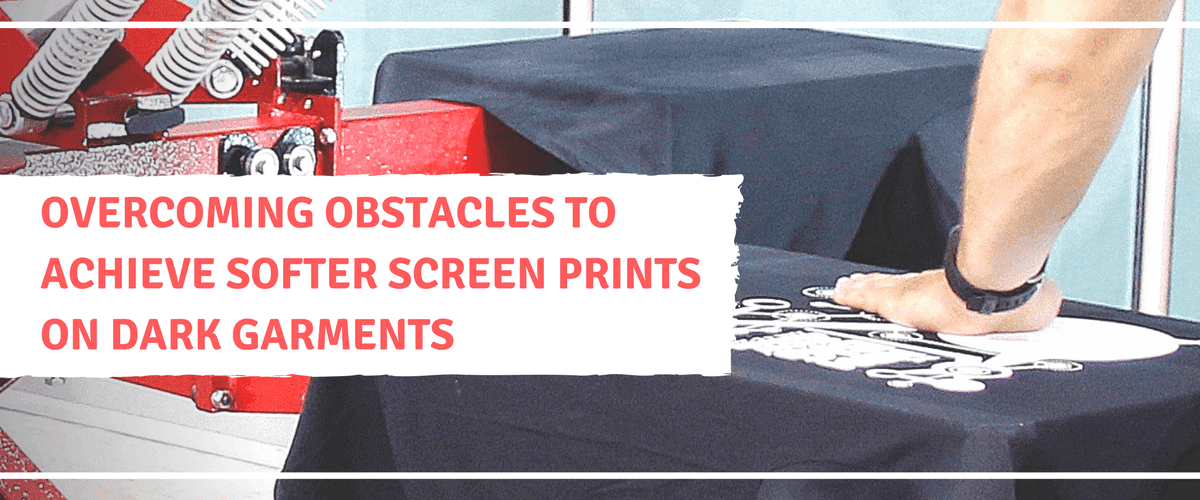No products in the cart.
en

Revolutionizing the screen printing industry through cutting-edge technology and quality service
Phone: +1 847-367-9760
Anatol Equipment Manufacturing Co.
1429 S Shields Dr
Waukegan, IL 60085

Revolutionizing the screen printing industry through cutting-edge technology and quality service
Anatol Equipment Manufacturing Co.
1429 S Shields Dr
Waukegan, IL 60085

These days, your screen print has to do more than look good; it has to feel good, too. With a few possible exceptions, such as athletic jerseys, consumers want a soft hand for their screen printed garments. With water-based inks or ink additives, that softer hand feel is easy to achieve when printing on a light garment. Printing on a dark garment is another story altogether, as water-based or inks with additives will lose their opacity, affecting the print. That means that to print a soft hand on a dark garment, you’ll need to try a few different strategies.
If you have creative control over your design, use your design to help you achieve a softer hand. Break up the design to avoid having one solid plastisol image. You can do this by using a minimalistic design or by giving the design a distressed look for plastisol prints. A design that doesn’t require fine detail will let you print with discharge ink, giving the final print the softest feel possible. A good rule of thumb for any graphic that you’re aiming to achieve a soft hand feel with is to use as few screens as possible to achieve your design.
The best way to get a soft hand on a dark garment is with discharge ink. Discharge ink is a form of water-based ink that washes the dye out of the garment’s material while laying down the desired color of ink. The problem with discharge is that it’s limited; it won’t print fine detail and some garment colors won’t wash entirely away, affecting the color of the print.
If you need to print with plastisol for color-matching purposes or to retain the detail of an image, the way to achieve the softest hand feel possible is by using the least amount of ink possible. The first step in doing so is to use a higher mesh count screen. While you might usually default to a 110-mesh-count screen, trying printing with a 230 mesh count using the print, flash, print method. That should allow you to get a clear, opaque image without using as much ink as you normally would for the print.
Another way to ensure that you are laying down as little ink as possible is to be sure that your screen is adequately tensioned. A well-tensioned screen allows you to use less squeegee pressure. When you use more pressure on your squeegee, you lay down a heavier layer of ink and force the ink into the fabric of your substrate. That will create a heavier, more plastic hand feel.
Skipping the underbase might be breaking the conventions of printing a bright or light ink on a dark garment, but you might find that your print comes out fine without one, especially if you’re printing with high-opacity inks. Try using one of the print’s colors as your base, and add a highlight white if you need to. Skipping the underbase means one less layer of ink and a softer hand feel.
For printers in search of a soft hand feel, a light or bright print on a dark fabric might seem like an impossible feat. Without discharge ink, you might not get a print as soft as your substrate, but with some adjustments, you can get a softer hand that meets your, or your client’s, expectations for hand feel.
Your message was successfully sent!